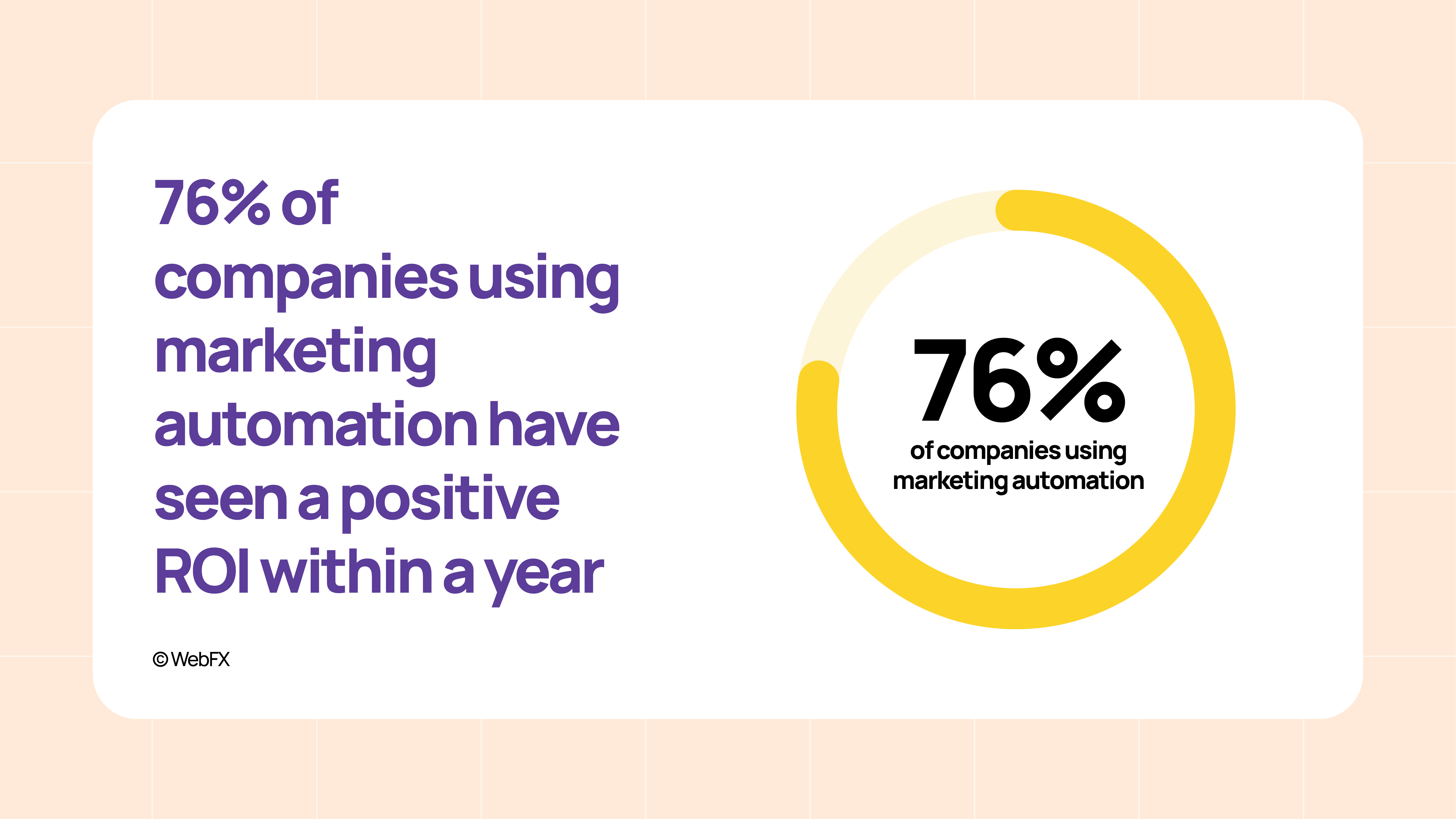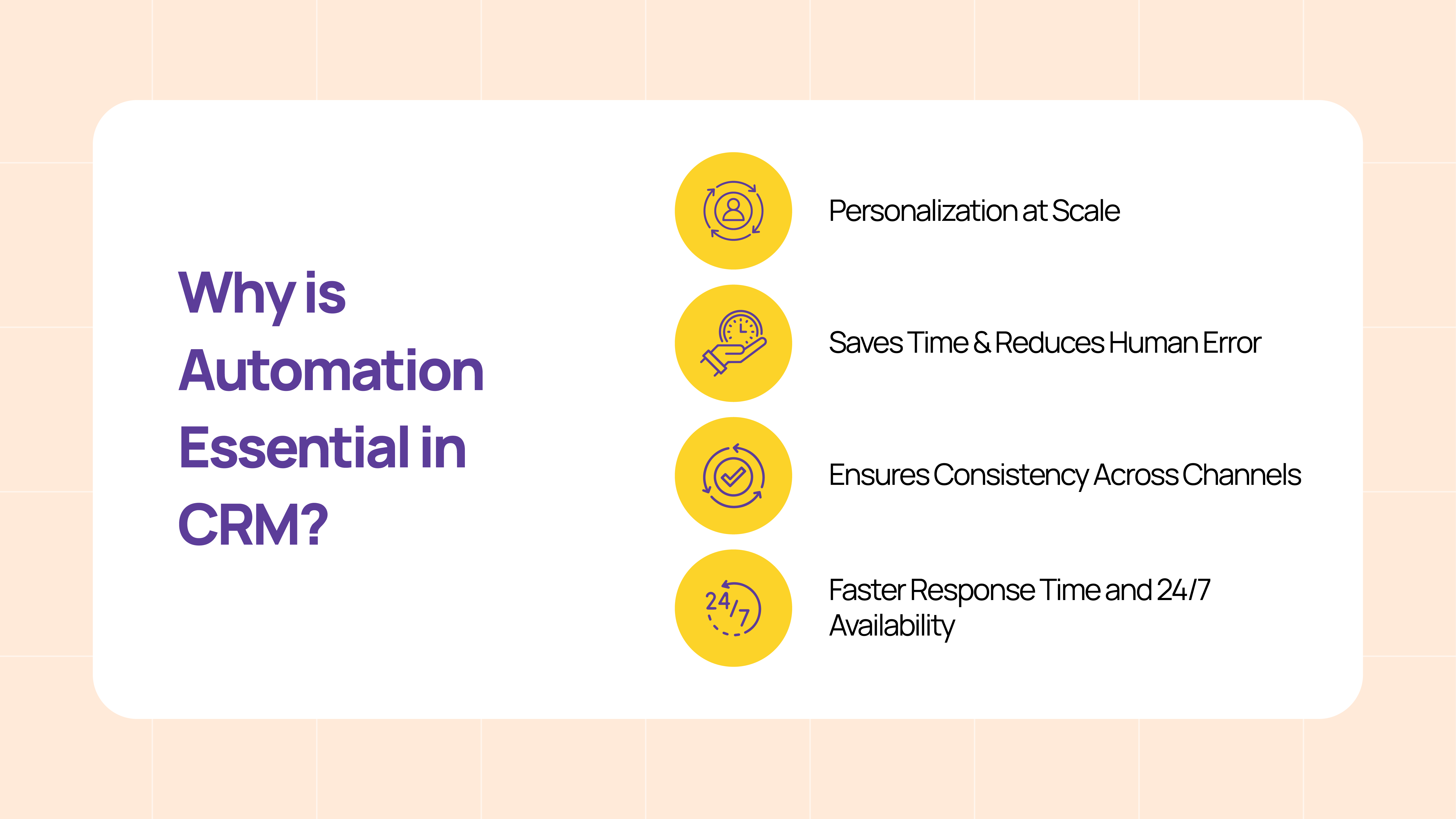
What if you could automate the tedious tasks while still keeping the personal touch your customers crave?
According to the latest data from Salesforce, customers’ expectations are evolving at lightning speed, and 65% of customers want companies to adapt to their changing needs and preferences. This is one of the major reasons why retailers are constantly looking for ways to streamline processes and boost engagement without sacrificing personalization. The answer? CRM strategies that balance the power of automation with the human touch of manual input.
But how can you achieve that perfect balance? Let’s explore why automation alone isn’t enough and how manual input can elevate your campaign management.
Why is Automation Essential in CRM?
Let’s face it—customers expect speed and personalization. Automation allows CRM systems to handle repetitive tasks, saving time, reducing human error, and increasing overall efficiency.

However, automation isn’t just about doing things faster; it’s about delivering personalized experiences at scale.
- Personalization at Scale
According to Epsilon, 80% of customers are more likely to make a purchase when a brand offers personalized experiences. Automation is the key to scaling these efforts. Retailers can leverage CRM tools to segment customers based on purchase behavior, demographics, and interests, delivering highly tailored messages—whether it’s a discount, product suggestion, or seasonal offer.
Example: Amazon’s automated recommendation system is a prime example. By analyzing past purchases and browsing history, the platform suggests relevant products—all automated yet personalized.
- Saves Time & Reduces Human Error
Manual processes are time-consuming and often prone to error. Automation takes over repetitive tasks like sending follow-up emails, processing customer requests, and tracking loyalty points. This reduces human error, boosts efficiency, and allows staff to focus on high-value tasks like strategic planning and creative campaigns.
Zappos automates order confirmations, shipping updates, and loyalty reminders, reducing the chances of missed communication and improving operational efficiency.

- Ensures Consistency Across Channels
According to the data of SAP Emarsys, 28% of customers believe in consistent branding across all channels for enhanced loyalty. When businesses scale, providing consistent messaging and customer experiences across channels can become difficult. Automation ensures that your brand voice and messaging remain consistent across all platforms, whether it’s email, SMS, or social media, ensuring a seamless experience for customers.
Starbucks uses an automated CRM system to ensure their customers receive consistent messaging, offers, and rewards across various touchpoints—mobile app, emails, and in-store experiences.
- Faster Response Time and 24/7 Availability
The world has turned fast-paced, and customers expect quick responses. Recent data suggests that the companies that use AI observe a 37% drop in first response times compared to the companies that don’t. With CRM automation, brands can offer instant replies to customer queries via chatbots, automated FAQs, or real-time status updates without requiring human intervention. This also provides customers with the convenience of 24/7 support.
H&M uses automated customer service bots to handle common inquiries regarding size availability, product status, and order tracking, ensuring that customers get answers instantly.
The Importance of Manual Input
While automation is indispensable, there’s a crucial element that machines can’t replace: human empathy. Manual input brings creativity, judgment, and emotional intelligence to the table—qualities that are vital in fostering meaningful customer relationships.

This demonstrates that while automation works for simple tasks, customers appreciate human input for solving problems and offering tailored solutions.
The marketing team of Nike, in their key events, like product launches or seasonal campaigns, get involved to create high-touch, emotionally-driven campaigns that make customers feel truly connected to the brand.
Thus, manual input helps in:
- Creativity & storytelling: Allows for more engaging, emotional marketing messages.
- Problem-solving: Ideal for handling complex customer issues or special requests.
- Building trust: Human interactions create stronger emotional connections and brand loyalty.
How to Combine Automation and Manual Input
Companies that use both automation and human input see higher customer satisfaction rates. The balance allows brands to optimize their CRM efforts by reducing the load on customer service teams while maintaining a high level of engagement and personalization.

But how can retailers strike that balance?
1. Automate What’s Repetitive, Reserve Manual Effort for High-Touch Engagement
Automate order confirmations, follow-up emails, and basic customer inquiries.
Leave the complex issues, such as product customization requests, escalated complaints, and special promotions, to your customer service or marketing teams.
2. Use Automation for Data, Let Humans Drive Strategy
Automation is great for collecting and analyzing data. But humans should interpret this data to develop strategic insights and creative campaigns that resonate with customers.
For example, Salesforce’s Einstein AI provides detailed insights based on customer interactions, but it’s up to marketers to craft the message and tailor the strategy for different segments.
3. Combine AI Insights with Human Empathy for Personalization
AI can automate basic personalization like suggesting products, but manual input can drive deeper, emotionally-charged personalized content.
For example, sending an email with a personalized discount for a customer’s birthday adds a human touch that automation can’t replicate.
Conclusion
Balancing automation and manual input in your CRM campaigns is the key to creating more meaningful customer experiences.
By blending the two, retailers can build smarter, more effective CRM strategies that not only improve engagement but also increase conversion rates and drive sustained growth.
In the future, the brands that will lead aren’t the ones that automate everything but the ones that know when to use automation and when to step in with a personal touch.